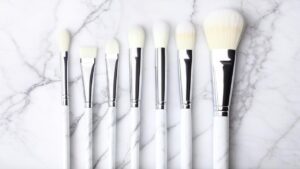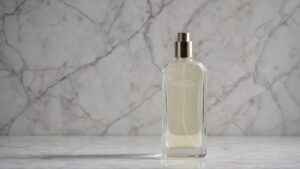Hair is the most versatile accessory we have. Good hair can make your day great. Research has shown that over 70% of women say that they feel a lack of confidence when their hair is not good. This shows how good hair health can make your day bright.
Similarly, nothing ruins your great hair day more than damaged hair. So, if you’re battling with frizz, dry, damaged, or split ends, you need ways to repair them. Below, I’m sharing everything about damaged hair you need to know.
What is damaged hair?
Hair damage is usually caused by damage to the outer layer of the hair or the cuticle. The cuticle opens, which makes the hair shaft more vulnerable to damage.
Here’s what actual damage to the hair looks like:
- Brittle
- Unmanageable
- Rough
- Lackluster
- Frizzy
- Dry
- Tangled
However, you can lower damaged hair and start repairing broken bonds, making little changes to your routine. I will discuss what changes need to be made to repair them in detail in the next headings. Keep following me!
Types of Hair Damage
There are four major types of damaged hair.
Frizz: When the cuticle does not lay flat, it can cause frizz. Frizz can appear anywhere from the surface level, crown level, and top of the hair to the ends. Humidity and damaged hair are often the leading causes of frizzing hair.
Dull and Dry Hair: The outer layer of your damaged hair lacks natural oils. This leads to a lack of shine in the hair. Excessive use of shampoo is a prominent cause of the loss of natural shine because it strips off natural oils from the scalp and hair. You should choose to wash your hair less often and use a shampoo that suits your hair type and texture.
Brittleness and Breakage: When a hair strand splits into two, split ends occur. It can cause brittle hair that can lead to breakage. Hair dusting, serums, and conditioners can cure split ends significantly.
Tangles: Damaged hair is more vulnerable to tangles. Friction between the hair strands occurs because of the raised cuticles that cause them to intertwine. This situation can be aggravated by the lack of moisture in the air. Brush with a wide-toothed comb from the bottom and work your way up. Rescue from the situation involves detangling sprays, oils, conditioners, and masks.
Causes of hair damage
Damaged strands can happen for several different reasons. Oftentimes, it is a combination of several factors. Below are the most common factors contributing to hair damage:
Bleaching: According to the American Academy of Dermatology (AAD), you’ll need higher volumes of peroxide or bleach when you lighten your hair more than three shades; this can cause damage to your hair. Bleach causes dryness, drawing moisture out of your hair. Routinely bleaching can lead to serious hair damage, like breakage and split ends.
Hair Color: Strands can dry out with permanent color and lead to damage like brittle hair and dehydration. That is why you should give your hair time to repair between sessions. It usually takes six to eight weeks to repair. Additionally, experts recommend using darker shades than your current color because it causes less damage and avoids bleach.
Heat Styling: Hot tools are popular for achieving trendy styles like the voluminous blowout. But, you know, they are not good for your hair, especially when used frequently. More often, the temperature of these hot tools gets so high that they tend to go above and beyond to cook our food; this can cause serious damage to our hair. If you necessarily want to achieve trendy styles, the best thing you should do is use them in moderation, like using heat protectors with healthy hair practices. And use them on a lower temperature setting.
How to Repair Damaged Hair
Repairing damaged hair is a real thing. It takes time, effort, and some money to restore it to a healthier shape.
Get regular trims
Getting regular trims is important to repair damaged hair or keep it in healthy form. It is important even when you are growing your hair for what it feels like forever. Getting regular trims removes dry and split ends. The idea is the same, just like you cut your nails and exfoliate your face, right? These are dead ends. If you remove them, you can stop them from traveling up your hair and breaking off even more length.
Trims are health products that remove weak and/or split ends. If you don’t cut split ends, they can travel up and cause more damage over time, which makes it weaker and causes it to break. Four to six weeks is a good time to get trims to maintain the cut you love, or six to eight weeks if you are growing hair.
Don’t brush wet hair
Yes, seriously, don’t brush your wet hair! Wet hair is significantly prone to breakage. Experts say breakage can be threefold greater when brushing wet hair. You can prevent flyaway, damage, and split ends. The best time to brush hair is when it is almost or completely dry. Wet hair is three times more vulnerable to breakage.
- Standard thumb rules for washing hair are:
- Use enough or a limited amount of product to wash your hair.
- Don’t wash it in very cold or very hot water.
- Avoid washing your hair more than once a day.
Dry Your Hair with a T-Shirt
You don’t need to toss out your old and faded t-shirts because you may use them to plop your hair when you hop out of the shower. Aggressively rubbing your dry hair with a terry cloth towel creates harsh tugging, regardless of how healthy your hair is. It can lead to damage.
Cotton tees work well because they’re absorbent, and most importantly, they are much gentler on the hair than towels. Remember, being gentle is nothing less than a game to take care of your damaged hair. A microfiber towel is another great way to dry your hair. It quickly absorbs water and dries hair out without pulling on it.
Consider how much you brush your hair.
There is an old saying that you should brush your hair 100 times before going to bed to keep it smooth and soft. Well, it is not true. According to experts, it can actually cause more damage to the hair. Yes, your hair needs to be combed, brushed, or combed, but it doesn’t need to be that much. Some hair strokes with a tooth comb are enough to set your hair.
Sleep on a silk or satin pillowcase
Friction and tugging from brushing your hair can lead to breakage, which means your hair can break with friction between your hair and your cotton pillowcase. To avoid this friction, you need a soft, slinky finish, such as silk or satin, as it gets gentler on your hair. It results in fewer tangles and frizz when you wake up. It also helps in the retention of moisture because cotton can draw out the necessary oils that moisturize the hair.
Omega-3 fatty acids
These acids are excellent sources for stimulating hair follicles and sebaceous glands. This may improve the health of your scalp. The best sources of omega-3 fatty acids include cold-water fish, such as salmon, sardines, and herring. Other good sources are:
- Cereal
- Flax seed
- Yogurt
- Cottage cheese
- Salad
Pump up the protein
A well-rounded diet can be great for your scalp and hair health. To ensure that, you should add protein to your diet, as it’s the primary source of hair production. Experts recommend 45 grams of protein daily in a diet. Common protein sources are:
- Poultry
- Fish
- Eggs
- Lean meat
- Beans
- Low-fat dairy products
Apply a hair serum
Stressing on serum use for hair health is less than enough stress. They are healthy sources to protect your hair against heat styling, control frizz, and leave a shine on it. This is a rule of thumb: apply serum to your hair and the ends.
Shampoo wisely and well
Over-shampooing when your hair is already damaged can aggravate the situation. Try using shampoo for 2-3 days. Don’t wash your hair with very cold or very hot water either.
How can you tell your hair is damaged?
You are likely to suffer from hair damage if your hair seems to be constantly breaking or if you think your frizzy hair is natural. Here is a quick test to check if your hair is damaged.
- Check the elasticity of your hair by taking a hair strand between two fingers and pulling gently. Stretch it to one-third of its length for healthy hair, or snap it immediately if your hair is damaged. A hair snap or breakage could be protein damage. If your hair stretches out and does not reach its normal length, this is a sign of dryness.
- Take an inch-wide section of your hair between two fingers and pull it down carefully. Keep your focus on the texture, as it is an indicator of your hair’s health. If your hair is smooth all through, it is healthy. However, if you feel an uneven surface with sections and kinks that snap off under tension, then you are probably battling damaged hair.
Final Thoughts
Hair damage can happen due to bleaching, heat styling, or any other reason. However, I have listed different reasons behind damaged hair, ways to determine if your hair is healthy, and different tips to repair your damaged hair.
I hope this little effort will help you restore the lost glory of your locks!




